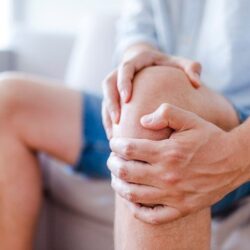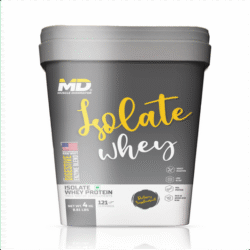In a world constantly buzzing with digital noise and social distractions, the simple act of human touch is often undervalued. Yet, touch has the power to calm nerves, spark connection, and even heal. One of the most effective ways to experience this is through mutual massage—a practice where two individuals take turns giving and receiving therapeutic touch. Whether practiced between partners or close friends, mutual massage goes beyond relaxation. It taps into something deeply human: the need for connection, care, and physical presence.
Introduction to Shared Touch and Its Importance
The Science Behind Human Touch
Touch is the first sense developed in the womb and remains essential throughout life. Neuroscience has shown that touch activates the brain’s orbitofrontal cortex, releasing oxytocin—the “feel-good” hormone. This hormone reduces cortisol levels, which are directly linked to stress and anxiety.
Studies in psychology and healthcare continue to confirm what ancient cultures knew all along: human touch plays a vital role in emotional bonding, stress regulation, and physical healing. It’s no surprise then that massage therapy, especially mutual massage, provides both psychological comfort and physiological balance.
How Touch Influences Emotional and Physical Well-Being
Shared touch has a unique way of grounding emotions. It creates a safe, calm space where individuals can reconnect with themselves and each other. This form of communication doesn’t need words; the pressure, rhythm, and presence of touch do all the talking. Through physical interaction, the body sends messages to the brain that it’s safe, cared for, and connected—essential ingredients for well-being in any relationship.
What Is Mutual Massage?
Understanding the Concept
Mutual massage is a collaborative massage exchange. Both individuals participate equally, taking turns giving and receiving. It’s not about professional skill but presence, intention, and attentiveness.
This practice can be incredibly healing and intimate, though not necessarily romantic. It’s used by friends, family members, or couples to foster trust, reduce physical tension, and deepen emotional bonds. Importantly, mutual massage offers a two-way street of care, unlike traditional massage where one party is passive.
Mutual Massage vs. Traditional Massage
Unlike a traditional massage performed by a professional, mutual massage is shared and reciprocal. The roles of giver and receiver alternate, making it more interactive and personal. While a professional massage focuses on specific therapeutic outcomes, mutual massage emphasizes connection, touch-awareness, and shared relaxation.
It’s also cost-effective and can be done in the comfort of a home or in specialized environments that offer safe, guided experiences—such as mutual massage in London, where professional guidance ensures safety and comfort.
The Psychological Benefits of Mutual Massage
Reducing Stress and Anxiety
One of the biggest mental health challenges today is chronic stress. Mutual massage acts as a natural stress reliever. When touch occurs in a safe environment, it triggers the parasympathetic nervous system, slowing the heart rate and calming the mind. The brain gets the message: “You’re safe now.” As a result, anxiety melts away, and emotional balance is restored.
Building Trust and Emotional Connection
Physical touch is a trust builder. Mutual massage opens up a unique space for vulnerability and emotional intimacy. By offering a caring touch, the giver communicates empathy, and the receiver feels seen and valued. Over time, this builds a strong emotional bridge between participants—whether it’s a romantic relationship, friendship, or familial bond.
Enhancing Mindfulness and Presence
Giving or receiving a massage demands presence. It’s almost meditative. Participants focus on the moment—the texture of the skin, the rhythm of the breath, the feel of muscle beneath fingertips. In a world of endless distractions, mutual massage offers a rare pause button, helping people reconnect with the here and now.
Physical Health Benefits of Mutual Massage
Boosting Circulation and Immunity
Touch and movement improve blood flow. When massaging muscles, it stimulates circulation, which helps oxygen and nutrients reach the body’s tissues more efficiently. This not only improves skin tone and muscle function but also supports the immune system by enhancing lymphatic flow, helping the body detox and fight illness.
Relieving Muscle Tension and Improving Flexibility
Most people carry stress in their bodies—tight shoulders, sore backs, aching legs. Mutual massage provides immediate physical relief. Gentle pressure and kneading help release built-up tension in the muscles. Over time, it also promotes better posture and flexibility, making daily movements smoother and pain-free.
Supporting Better Sleep and Relaxation
Touch naturally triggers melatonin and serotonin release, two key hormones involved in sleep regulation and mood. A 15-minute massage session before bed can significantly enhance sleep quality. For those battling insomnia or racing thoughts at night, mutual massage can be the soothing ritual that signals the body it’s time to rest.
Mutual Massage in London: What to Expect
Professional Environments Offering Mutual Massage
In London, mutual massage has gained popularity for its healing and community-building potential. There are dedicated wellness centers offering safe spaces for people to explore mutual touch—always guided by professional facilitators who respect boundaries and ensure a supportive experience.
These environments prioritize consent, communication, and comfort, making it accessible even for those new to the practice. Anyone curious about mutual massage in London can find a variety of sessions, from workshops to partner-based experiences, all designed to promote connection and wellness.
How to Prepare for a Session
Getting ready for a mutual massage experience doesn’t require much—just openness, clean hands, and a willingness to give and receive. Wearing comfortable clothing or being in a private space ensures ease. Some sessions may use oils or lotions, while others focus on clothed massage techniques. The most important preparation is mental: enter the experience without judgment or expectations.
Choosing the Right Setting for Comfort and Relaxation
The setting plays a big role in how effective mutual massage can be. In London, there are both casual and professional environments. Some prefer at-home sessions with soft lighting, relaxing music, and warm towels. Others opt for structured workshops that offer a sense of community and guided instruction.
Whatever the choice, creating a peaceful, respectful atmosphere is key. Shared touch thrives where there’s mutual understanding, clear boundaries, and a shared intention to nurture and relax.
Conclusion
Shared touch is more than just a luxury—it’s a deeply human necessity. Through mutual massage, individuals can unlock profound emotional and physical benefits. From stress reduction to improved intimacy and physical healing, this simple practice invites more presence, connection, and compassion into everyday life. In a fast-paced, often disconnected world, mutual massage stands out as a meaningful way to restore balance, one touch at a time.
FAQs
- Is mutual massage suitable for people without massage experience?
Absolutely. Mutual massage is about intention, not perfection. No professional training is required—just attentiveness and care. - Can mutual massage help with chronic pain?
Yes, regular sessions can help reduce tension-related pain and improve muscle flexibility, offering natural relief over time. - Is mutual massage only for couples?
Not at all. It’s suitable for friends, family, or anyone seeking shared, respectful touch in a safe environment. - Where can mutual massage in London be experienced safely?
Several wellness centers and guided workshops in London offer structured environments for mutual massage, with a focus on comfort, boundaries, and care. - How often should mutual massage be practiced?
Even once a week can significantly enhance emotional and physical well-being. Consistency, even in short sessions, makes a big difference.


